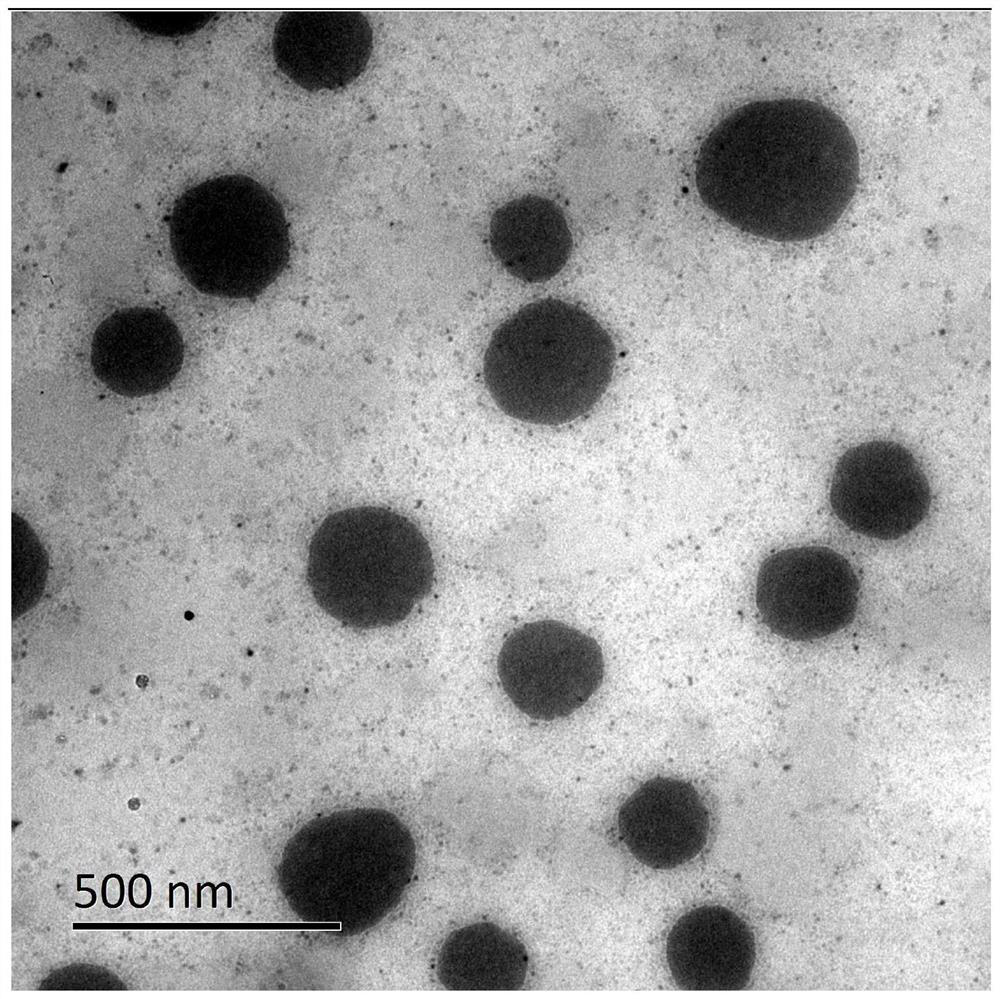Edible fruit and vegetable nano coating preservative as well as preparation method and application thereof
A coating film preservative, nanotechnology, applied in the field of materials, can solve the problems of weak antibacterial performance, failure of antibacterial components, and no durability
- Summary
- Abstract
- Description
- Claims
- Application Information
AI Technical Summary
Problems solved by technology
Method used
Image
Examples
Embodiment 1
[0040] The preparation process of water-soluble nano plant glycogen suspension:
[0041] Weigh sweet corn seeds, add deionized water, and soak at 4°C for 24 hours. Remove the aqueous solution, pulverize with a mill, add deionized water according to the material-to-water ratio of 1:3 (v / v), and let stand at 4°C for 24 hours; take the supernatant, add acetic acid to adjust the pH to 4.8-5, and then set Let stand at 4°C for 24h; centrifuge at 3000g for 10 minutes to remove precipitation, and get the supernatant to boil in a boiling water bath, and centrifuge at 3000g for 10 minutes to further remove protein until there is no oil and no precipitation; add the obtained supernatant to absolute ethanol and stir Mix the supernatant and absolute ethanol in a volume ratio of 1:1, and let it stand at 4℃ until the precipitation is complete. After 3000g centrifugation, the precipitate is freeze-dried (temperature -55℃, vacuum degree 0.026mbar) to obtain water-soluble nano plant sugar origina...
Embodiment 2
[0048] Food-derived antimicrobial peptide Enterolysin A preparation process:
[0049] 1. Extract DNA from stinky tofu samples with DNA kit.
[0050] 2. Amplification of Enterolysin A gene: Use the obtained corresponding primers to amplify the Enterolysin A gene in stinky tofu using PCR technology.
[0051] 3. Cloning vector construction: After the PCR product is purified by agarose electrophoresis gel tapping, it is connected to the cloning vector pGM-T at 16°C overnight according to the molar ratio of the target fragment to the vector of 3:1. After the ligation, transfer the ligation product to E. coli TOP10 competent cells, and then spread it on the LB(Amp+) plate (1h in advance, spread 16μL of 50mg / mL IPTG, 40μL of 20mg / mL X-gal on the LB(Amp+) plate , Placed at 37°C) to form an Enterolysin A gene clone library. The next day, leukoplakia were picked and cultured overnight, and the recombinant clone plasmid pGM-T / Enterolysin A (plasmid extraction kit) was extracted.
[0052] 4. Ob...
Embodiment 3
[0064] Preparation method of edible fruit and vegetable nano-coating antistaling agent:
[0065] The raw materials are calculated by mass percentage: 50wt% of Pickering emulsion of hydrophobic nano-plant glycogen; 0.5wt% of antibacterial peptide Enterolysin A; 2wt% of cinnamaldehyde; 5wt% of chitosan; 3wt% of sorbitol; 39.5wt% of deionized water.
[0066] Take the film-forming agent chitosan and the plasticizer sorbitol and dissolve them in deionized water, heat at 70°C for 10 minutes, and stir at a slight uniform speed during the heating to prevent the generation of bubbles and the denaturation of chitosan. After heating, cool to room temperature for later use.
[0067] Take Pickering emulsion and add the antimicrobial peptide Enterolysin A and cinnamaldehyde, mix well and set aside.
[0068] Mix the above two solutions 1:1 and stir evenly to obtain the edible nanometer fruit and vegetable coating preservative.
[0069] Take 20mL of the edible fruit and vegetable nano-coating antistali...
PUM
 Login to View More
Login to View More Abstract
Description
Claims
Application Information
 Login to View More
Login to View More - R&D
- Intellectual Property
- Life Sciences
- Materials
- Tech Scout
- Unparalleled Data Quality
- Higher Quality Content
- 60% Fewer Hallucinations
Browse by: Latest US Patents, China's latest patents, Technical Efficacy Thesaurus, Application Domain, Technology Topic, Popular Technical Reports.
© 2025 PatSnap. All rights reserved.Legal|Privacy policy|Modern Slavery Act Transparency Statement|Sitemap|About US| Contact US: help@patsnap.com



